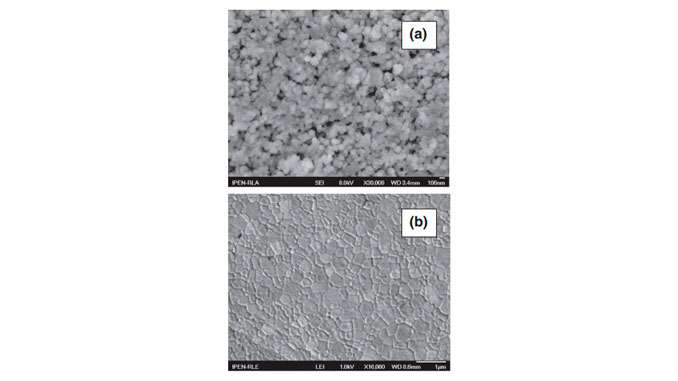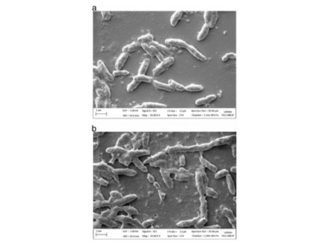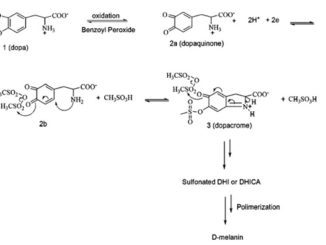
Writers: R.L. Grosso; M. Bertolete; I.F. Machado; R. Muccillo; E.N.S. Muccillo
Keywords: Zirconia; Spark plasma sintering; Crystalline structure; Microstructure; Impedance spectroscopy
Abstract: In this work the effect of sintering on the ionic conductivity of scandia and ceria-stabilized zirconia, ScCeSZ, is investigated. Commercial ScCeSZ with specific surface area of 11.5 m2.g− 1 was used as received. Consolidation of the solid electrolyte was accomplished by spark plasma sintering in the 1273–1473 K range for 1 and 5 min. The relative sintered density for spark plasma sintered samples was higher than 95% for temperatures of 1373 K and higher. Raman spectroscopy analysis revealed that all samples exhibit both cubic and tetragonal structures. The ionic conductivity was systematically evaluated by impedance spectroscopy and the main difference in the blocking of O2 − ions at the grain boundary of several samples is related to the average grain size. In the high-temperature range, a decrease in the ionic conductivity with increasing dwell temperature and time is attributed to the increase of the fraction of tetragonal phase.
DOI: 10.1016/j.ssi.2012.08.006




